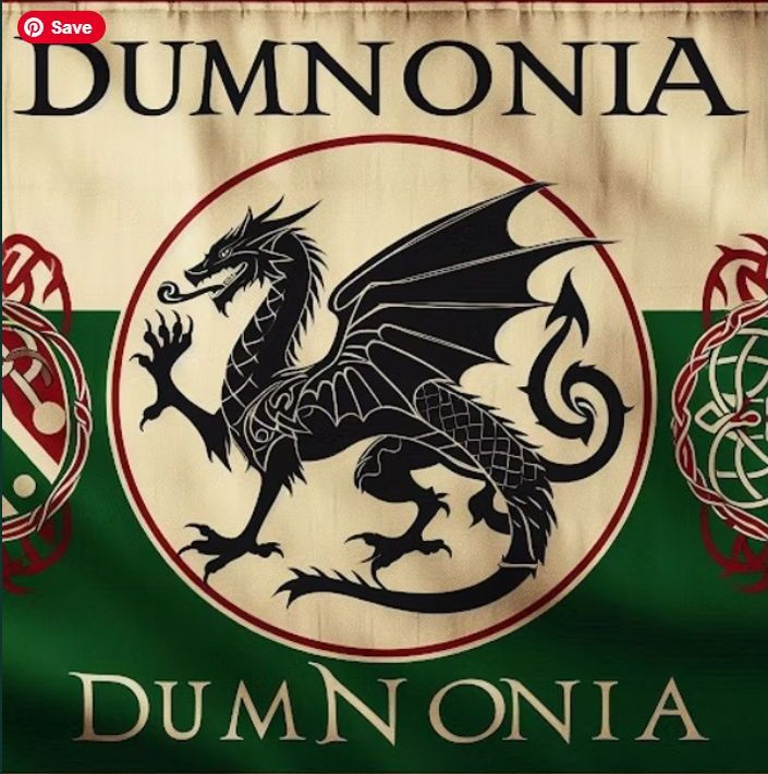OTHER BATTLES WON BY DUMNONIA
OTHER BATTLES WON BY DUMNONIA
The Battle of Badon, also known as Mons Badonicus, was a decisive conflict between the Britons and the Anglo-Saxons in the late 5th or early 6th century. It marked a major victory for the Britons, halting Saxon expansion for decades.
Key Details:
Date & Location: The exact date and location of the Battle of Badon, shrouded in mystery, remain uncertain. However, it is believed to have taken place in the enigmatic landscapes of southern Britain.
Briton Leadership: The victory at the Battle of Badon is often attributed to the strategic brilliance of Ambrosius Aurelianus, a figure of great historical significance. However, later traditions and Arthurian legends also link this triumph to the legendary King Arthur, further adding to the battle's historical weight.
Significance: The battle temporarily secured Briton control, delaying Saxon dominance in England.
The earliest reference comes from Gildas, a 6th-century writer, who described it as a siege rather than an open battle. Later medieval sources, including the Annales Cambriae, associate it with Arthurian legend.
The Annales Cambriae (Annals of Wales) is a medieval chronicle of immense significance. It records key events from the 5th to the 10th centuries, providing crucial insights into early British history, particularly regarding figures like King Arthur and Merlin.
The chronicle is significant because it provides rare insights into post-Roman Britain, including battles, rulers, and religious events. It mentions the Battle of Badon (516 AD), where Arthur is said to have carried the cross of Christ for three days, and the Battle of Camlann (537 AD), where Arthur and Medraut (Mordred) fell. While these entries have fueled Arthurian legends, historians debate their accuracy.
The Annales Cambriae has multiple versions, with manuscripts housed in British archives. It was likely influenced by earlier sources, including Bede’s Chronica Minora and Isidore of Seville’s writings.
The Annales Cambriae (Annals of Wales) is a medieval chronicle that records key events in British history. It mentions that the Britons won three battles, including the Battle of Hehil (c. 721–722 AD). The other two battles are less clearly identified, but they likely involved conflicts against the Anglo-Saxons, helping to preserve British resistance in the West.
The Battle of Hehil (c. 721–722 AD) was a significant victory for the Britons, likely against the Anglo-Saxons of Wessex. The battle is mentioned in the Annales Cambriae, which records that the Britons won three battles, including Hehil.
Key Details:
Location: The site is unknown but was fought "among the Cornish." Scholars have suggested locations like the River Hayle or the River Camel in Cornwall.
Opponents: While the Annales Cambriae does not specify the enemy, historians believe it was Wessex, as the Anglo-Saxon Chronicle omits mention of the battle, possibly due to their defeat.
Significance: The victory may have delayed Saxon expansion into Cornwall for nearly a century, helping to preserve the independence of the Britons.
The Battle of Hehil (c. 721–722 AD) was a significant victory for the Britons, likely against the Anglo-Saxons of Wessex. The battle is mentioned in the Annales Cambriae, which records that the Britons won three battles, including Hehil.
Several key figures played roles in the battles and resistance of Dumnonia against Saxon expansion:
- Geraint of Dumnonia (c. 700–710 AD) – One of the last recorded kings of Dumnonia, known for resisting West Saxon incursions.
- Bledric ap Custennin (c. 598–613 AD) – A possible ruler mentioned in later sources linked to conflicts with the Saxons.
- Petroc Baladrddellt ("Petroc Splintered Spear") (c. 633–654 AD) – A warrior-king whose name suggests military prowess.
- Constantine of Cornwall (c. 435–443 AD) – A legendary figure sometimes linked to early resistance efforts.
These rulers and warriors shaped Dumnonia’s defence against external threats, preserving its independence for centuries. Let me know if you would like to explore their individual stories further!
One of the most notable battles won by the Britons in Dumnonia was the Battle of Hehil (c. 721–722 AD). This battle fought "among the Cornish," saw the Britons victorious, likely against the Anglo-Saxons of Wessex. Though details are scarce, it was a significant triumph that helped preserve the independence of the Britons in the southwest for some time.
Dumnonia, encompassing modern Cornwall, Devon, and parts of Somerset, was a stronghold of resistance against Saxon expansion. The Britons fought numerous battles to defend their territory, though many remain undocumented or lost to history.
